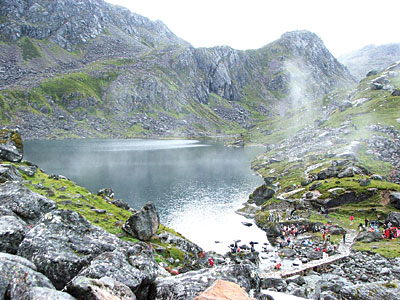 |
Some years ago I observed a congregation of 7,000 pilgrims at 4,300 m above sea level ready to pray to Shiva at the magnificent holy lake of Gosainkunda north of Kathmandu. Many were in no mood to pray. They were stricken with altitude sickness in its various forms: acute mountain sickness, high altitude pulmonary oedema, and high altitude cerebral oedema.
The initial symptoms of acute mountain sickness (headache and nausea) are warning signs that need to be heeded. Alas, many pilgrims climb too high too fast (from Kathmandu at 1,300 m to the lake in two nights) and totally disregard initial symptoms.
Recent studies have shown that acute mountain sickness is rampant in this population of pilgrims to Gosainkunda and that many are dehydrated because they are fasting. Women are so serious about the Gosainkunda ritual they do not even drink water as they ascend.
There is a belief that the sickness they experience is caused by the scent of the flowers and alpine vegetation that grow on the wayside. This is akin to what Jesuit travelers in the early 18th century also thought when they were crossing Himalayan passes. The scent of the flowers as the cause ofaltitude sickness does not make sense, as I am fond of reminding the pilgrims, because invariably the patients improve significantly on descent, even though the flowers are still giving off their scent.
One study postulated that the visions that these high altitude pilgrims often report may not actually be divine revelations but just hallucination caused by the cerebral oedema. The pilgrim community may not favour this rational explanation for what is believed to a spiritual experience.
Pilgrims face other problems besides altitude. I have seen obese men and women, who can barely climb up stairs in their homes, undertaking high altitude pilgrimages on helicopter and horseback.Usually they decide to do this on the spur of the moment as a famous "guru" is going to lead them.
This year the annual Gosainkunda festival is 13 August 13, the fullmoon day of Janai Purnima. Hopefully the Himalayan Rescue Association and the Mountain Medicine Society of Nepal at Dhunche will have been successful in convincing the pilgrims not to go too high too fast, to listen to their bodies, drink adequate amount of clean water, and use medicines if necessary. Although the drug acetazolamide (diamox) prevents and treats altitude sickness, ascending gradually with proper acclimatisation is the best precaution.


